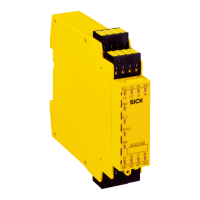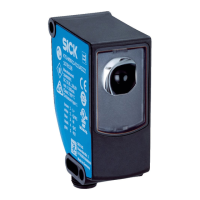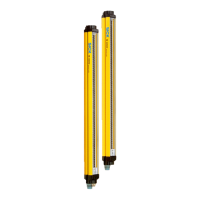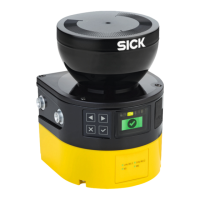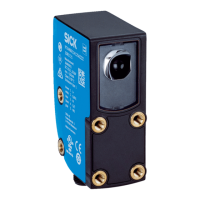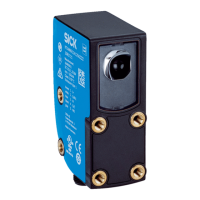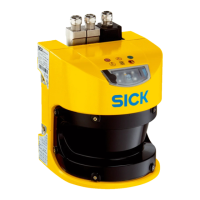6.4.3 Signal for PDS (SR) - drive (safety-related)
This safety system provides output signals for the drive system of an application in
or
der to perform the SS1 and SS2 safe stop functions.
Output K100.1 / Q4 - KF130 stop request
This non-safe signal is necessary for a safe stop function with a monitored stop ramp.
The signal is active Low, meaning that 24 V DC are applied to the output when a stop
has not been requested and 0 V are applied when a stop has been requested.
The signal can be linked to a device that activates the stop ramp (e.g., process con‐
troller or drive).
NOTE
T
his signal does not necessarily have to be used.
If the signal is not used, the machine stops immediately upon the Enable torque output
signal by means of a safe torque off (STO) function without monitoring the stop ramp.
Output K100.1 / Q1+Q2 - QA110.x safety output (STO - safe torque off)
This safety signal includes a dual-channel output. The signal is active Low, meaning
that 24 V DC are applied to the output when a stop has not been requested and 0 V are
applied when the drive torque needs to be deactivated.
The safety output signal must be linked to a safe STO input of the drive. This STO input
forms part of the safety functions covered by this safety system and must comply with
the corresponding requirements (category 4, PL e as per EN ISO 13849-1 or SILCL3 as
per DIN EN 62061).
The STO function must be wired as shown in the operating instructions for the drive sys‐
tem. The wiring must fulfill the requirements for category 4, PL e as per EN ISO
13849-1.
NOTE
T
he dual-channel outputs switch simultaneously. If the STO input of the drive system
requires a complementary signal, an additional safety relay with “normally open” and
“normally closed” contacts must be put in place. This case will not be considered with
this safety system.
If the STO input of the drive system only has a single channel, additional measures
must be taken to ensure that the relevant safety requirements are complied with. This
case will not be considered with this safety system.
6.4.4 Signal for optional safe brake control
The manufacturer must use the risk assessment to determine whether a brake and in
t
urn the safe brake control (SBC) safety function are required. This safety system only
makes the brake control function possible.
The machine manufacturer is responsible for the technical and safety-related configura‐
tion of the brake and the corresponding hardware design.
If the risk assessment determines that a brake is needed, it must comply with the
requirements of category 4, PL e (EN ISO 13849-1). A fault in the brake must not lead
to the loss of the safety function. The respective specifications provided by the manu‐
facturer for the brake must be followed.
This safety system comes with the option of a dual-channel output for connecting an
external brake. The safe brake control (SBC) safety function can be implemented with
this brake. 24 V DC are applied to the output when the brake is released and 0 V are
applied when the brake function is activated.
6 ELE
CTRICAL INSTALLATION
30
O P E R A T I N G I N S T R U C T I O N S | Safe Linear Positioning 8020941/12O9/2019-08-05 | SICK
Subject to change without notice

